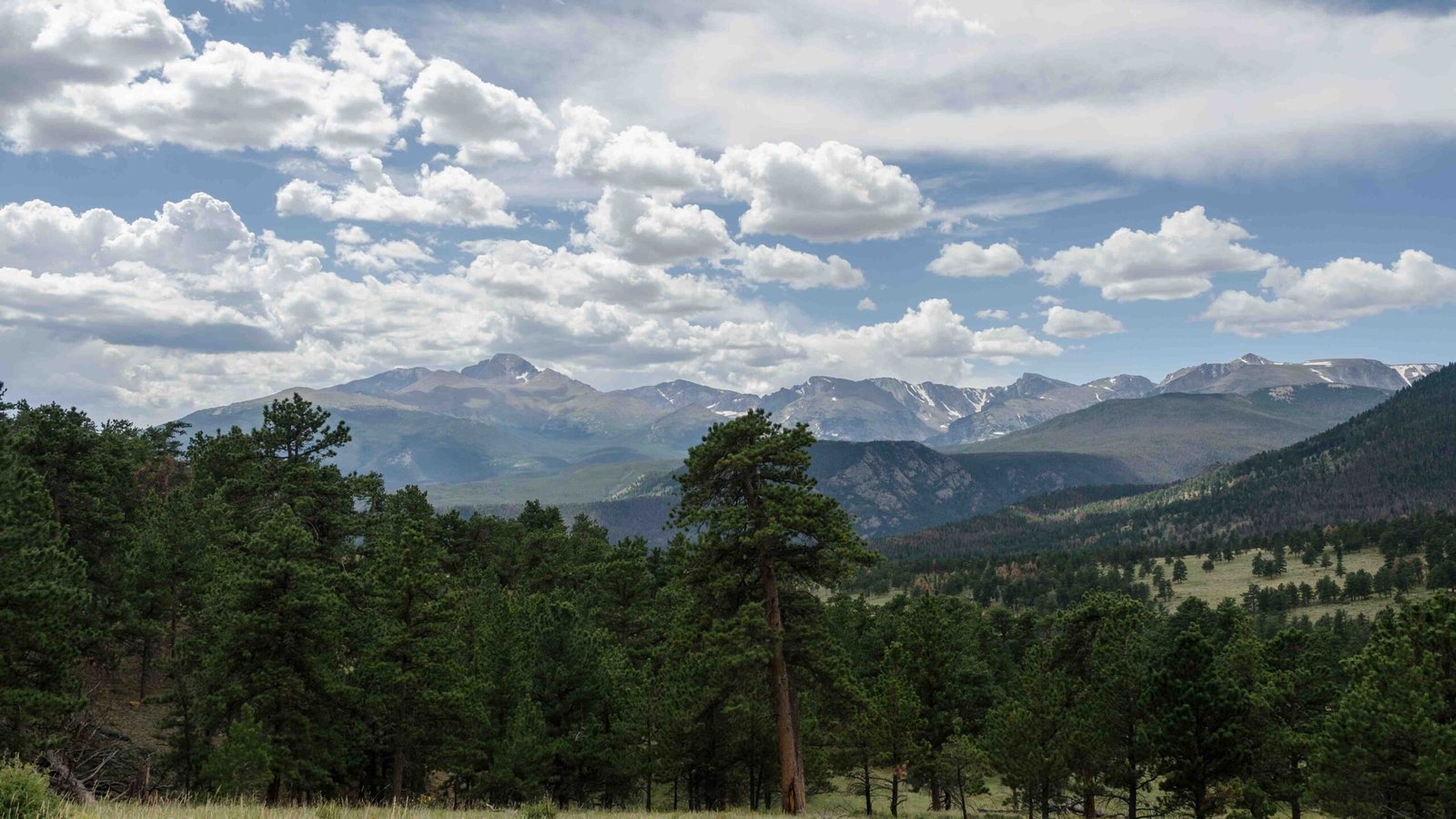Rocky Mountain National Park, accessible from the charming town of Estes Park, offers visitors a breathtaking wilderness experience in the heart of Colorado’s Rocky Mountains. Spanning over 415 square miles, this iconic national park features diverse ecosystems, from lush forests to alpine tundra, and is home to an array of wildlife. Estes Park serves as the eastern gateway to the park, providing convenient access and a range of amenities for visitors exploring this natural wonder.
What Are the Entrance Fees for Rocky Mountain National Park?

Visiting Rocky Mountain National Park requires an entrance fee, which varies based on the type of pass and duration of stay. Here’s a breakdown of the current fees:
- Vehicle Pass:
- One-Day Pass: $30
-
Seven-Day Pass: $35
-
Individual/Bicycle Pass:
- One-Day Pass: $15
-
Seven-Day Pass: $20
-
Motorcycle Pass:
- One-Day Pass: $25
-
Seven-Day Pass: $30
-
Annual Passes:
- Rocky Mountain National Park Annual Pass: $70
- America the Beautiful – National Parks and Federal Recreational Lands Annual Pass: $80
Additionally, a timed entry permit reservation fee of $2 is required from May 24 to October 20, 2024.
Which Hiking Trails Are Accessible from Estes Park?

Rocky Mountain National Park offers a variety of hiking trails suitable for different skill levels, all accessible from Estes Park. Here are some popular options:
- Bear Lake Trail
- Length: 0.8 miles
- Difficulty: Easy
-
Features: Scenic lake views, access to other trails
-
Dream Lake Trail
- Length: 2.4 miles
- Difficulty: Moderate
-
Features: Dream Lake, views of Hallett Peak and Tyndall Gorge
-
Alberta Falls Trail
- Length: 3.8 miles
- Difficulty: Moderate
-
Features: Alberta Falls, mountain vistas
-
Longs Peak Trail
- Length: 14.5 miles round trip
- Difficulty: Strenuous
- Features: Summit of Longs Peak, Keyhole route
What Lodging Options Are Available in Estes Park?
Estes Park provides a range of accommodations for visitors to Rocky Mountain National Park:
- Hotels and Resorts
- Examples: The Stanley Hotel, Estes Park Resort
- Average rates: $150-$300 per night
-
Amenities: Restaurants, pools, shuttle services
-
Cabin and Vacation Rentals
- Available through VRBO, Airbnb, local agencies
- Average rates: $100-$500 per night
-
Features: Full kitchens, fireplaces, scenic views
-
Camping
- Options: Aspenglen, Glacier Gorge, Longs Peak Campgrounds
- Fees: $20-$30 per night
- Amenities: Basic facilities, some with picnic tables and grills
How Can Visitors Best Experience Wildlife in Rocky Mountain National Park?
To maximize wildlife viewing opportunities in Rocky Mountain National Park:
- Best Times: Early morning and late evening
- Common Wildlife: Elk, moose, deer, bighorn sheep, various bird species
- Prime Locations:
- Bear Lake area for elk
- Kawuneeche Valley for moose and deer
- Alpine areas of Trail Ridge Road for bighorn sheep
Safety Guidelines:
– Maintain a safe distance (25 yards for large animals, 100 yards for bears)
– Do not feed wildlife
– Use binoculars or telephoto lenses for observation
– Follow park rules and ranger guidelines
What Are the Must-See Attractions in Rocky Mountain National Park?
- Trail Ridge Road
- America’s highest continuous paved road
-
Offers panoramic views of the Rockies
-
Bear Lake
- Popular spot for hiking and scenic views
-
Accessible year-round
-
Alpine Visitor Center
- Highest visitor center in the National Park System
-
Exhibits on alpine ecosystems
-
Alluvial Fan
- Unique geological formation
-
Result of a 1982 dam break
-
Moraine Park
- Expansive meadow with wildlife viewing opportunities
- Popular for camping and picnicking
How Does the Weather Affect Visits to Rocky Mountain National Park?
Rocky Mountain National Park experiences diverse weather conditions throughout the year:
| Season | Average Temperature | Conditions | Visitor Impact |
|---|---|---|---|
| Summer | 70-80°F (21-27°C) | Mild, afternoon thunderstorms | Peak visitation, all areas accessible |
| Fall | 45-65°F (7-18°C) | Cool, possibility of early snow | Fall colors, elk rutting season |
| Winter | 20-40°F (-7 to 4°C) | Cold, snowy | Limited road access, winter sports |
| Spring | 35-60°F (2-16°C) | Unpredictable, snow melting | Fewer crowds, some areas may be closed |
Visitors should check weather forecasts and park conditions before their trip, especially when planning activities in higher elevations.
What Are the Best Photography Spots in Rocky Mountain National Park?
- Dream Lake
- Iconic mountain reflections
-
Best at sunrise
-
Forest Canyon Overlook
- Panoramic views of the Continental Divide
-
Accessible from Trail Ridge Road
-
Sprague Lake
- Reflective waters with mountain backdrop
-
Wheelchair-accessible trail
-
Longs Peak
- Dramatic views of the park’s highest peak
-
Best from Moraine Park or Beaver Meadows
-
Many Parks Curve
- Sweeping vistas of multiple park regions
- Excellent for sunset photography
Photographers should bring a variety of lenses, a sturdy tripod, and be prepared for rapidly changing weather conditions.
Rocky Mountain National Park, accessible from Estes Park, offers visitors an unparalleled opportunity to experience the majestic beauty of the Colorado Rockies. With its diverse landscapes, abundant wildlife, and range of activities, the park caters to nature enthusiasts, hikers, and photographers alike. Whether you’re seeking a challenging mountain ascent or a peaceful lakeside stroll, Rocky Mountain National Park provides a memorable adventure in one of America’s most stunning natural settings.
References:
1. https://www.national-park.com/rocky-mountain-national-park-tickets-price/
2. https://www.allrockymountain.com/park_info/fees_permits.php
3. https://www.nps.gov/romo/planyourvisit/fees.htm

